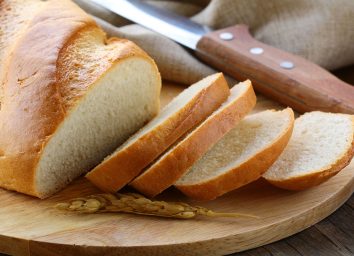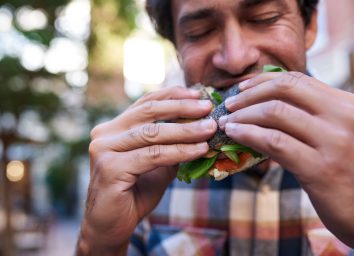8 Warning Signs You’re Buying the Wrong Bread
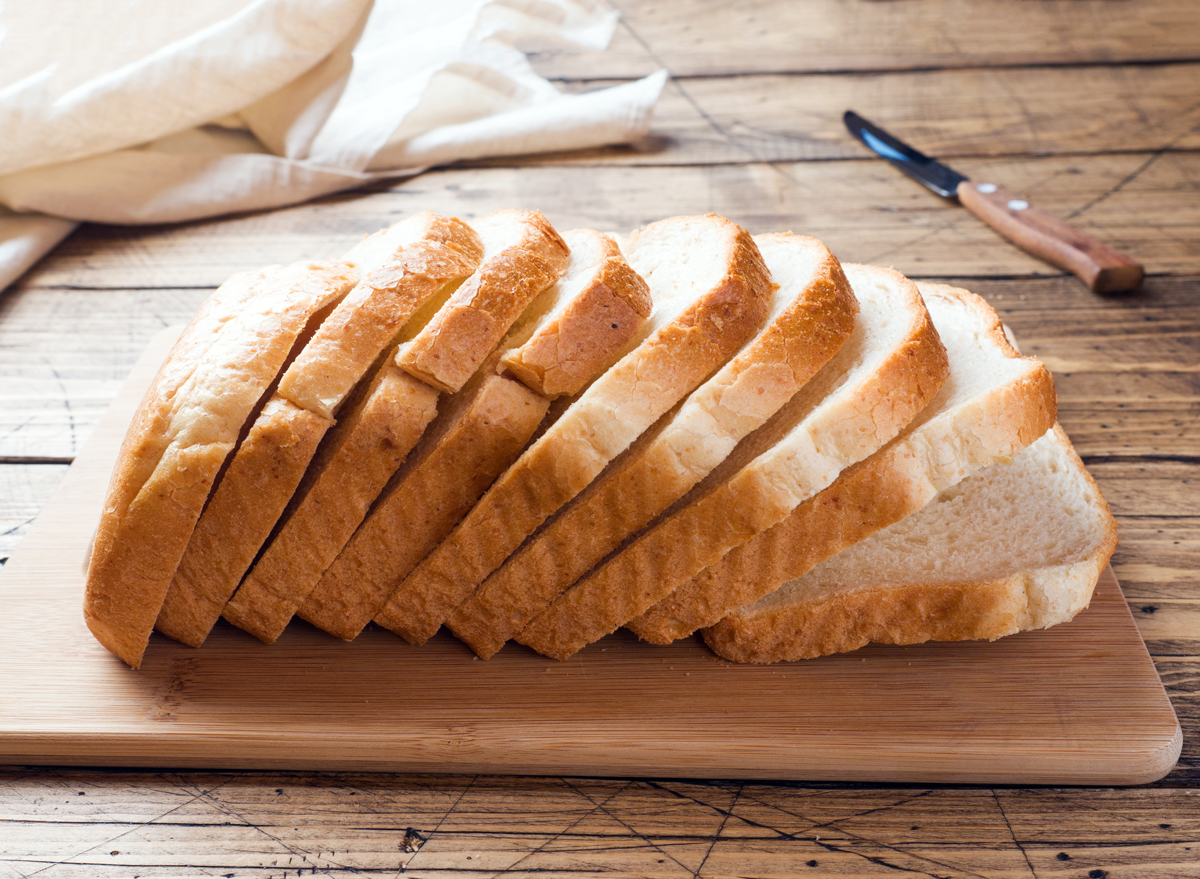
Bread can get a bad rap, as it’s carb-heavy. And lately, it seems like more and more people are looking to be more mindful of their carb and fiber intake. You shouldn’t have to completely abandon bread from your diet if you don’t want to though, as you can still find excellent bread options at the grocery store that are higher in fiber and lower in refined carbs and sugar, or that are specifically tailored to a low-carb diet.
The big takeaway: you should steer clear of bread that lacks nutritional value.
A good rule of thumb is to look for a bread that has six grams or fewer of total sugar per serving and at least two grams of fiber per serving, as well as “whole” or “grain” on the label, says Beth Stark, RDN, LDN, a PA-based nutrition communications consultant and recipe developer.
It’s also important to be cautious about the sodium content, as according to The American Heart Association, bread makes the “Salty 6” list because it tends to be higher in sodium than you may think, and it’s a food that people tend to eat a lot of it.
So to best help you navigate the grocery aisles, here are a couple of red flags to be wary of when shopping in the bread aisle. And after you read up on these, be sure to save our list of 22 Meals to Melt Belly Fat in 2022.
You assume “gluten-free” means healthy.
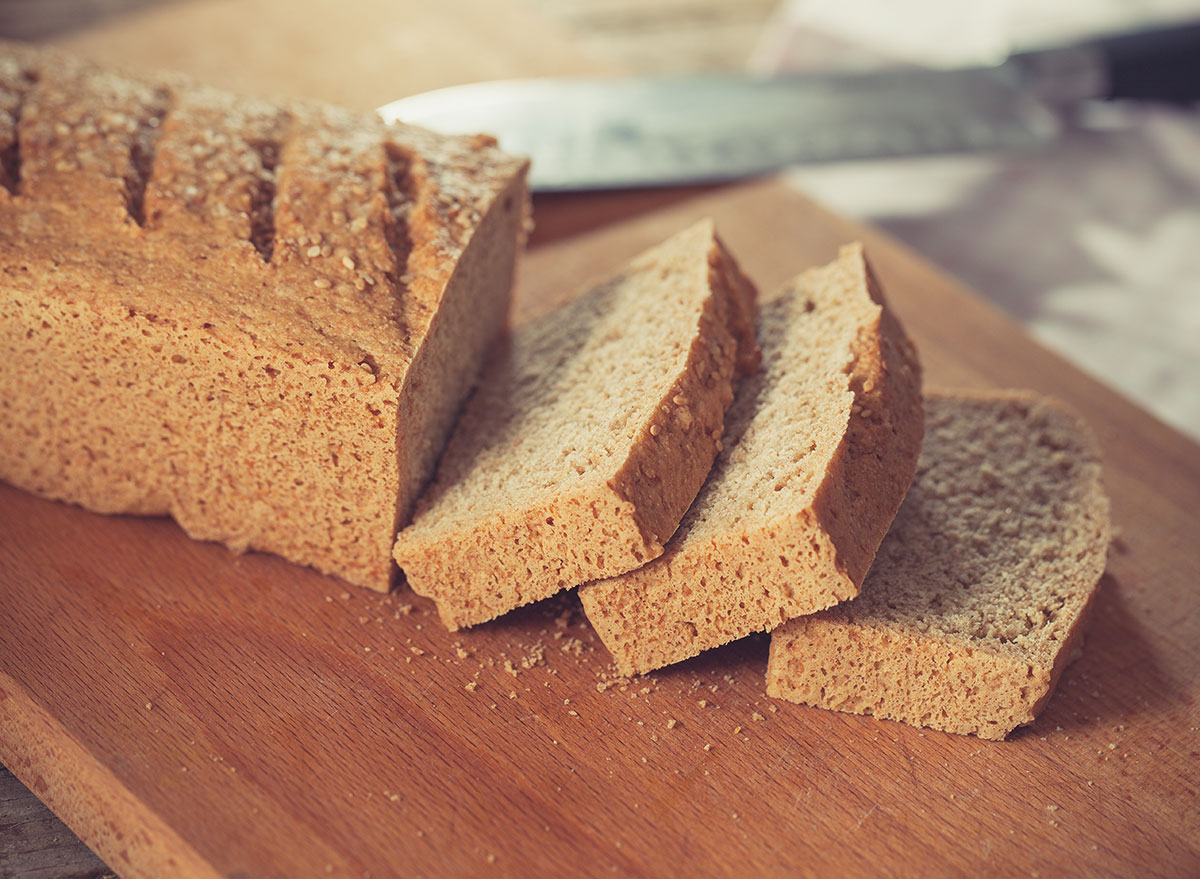
Don’t be swayed by a bread’s gluten-free status, unless of course you have celiac disease or need to avoid gluten for some other reason.
“Many gluten-free breads lack nutritious whole-grain ingredients that provide protein and fiber that give it texture, flavor, and appetite-curbing power,” says Stark. “To find a more nutrient-rich gluten-free option, choose a seeded bread that’s made with whole-grain ingredients and has at least 2 grams of fiber per slice.” There are plenty on the market—you just need to read those labels closely!
It doesn’t have the whole-grain stamp.
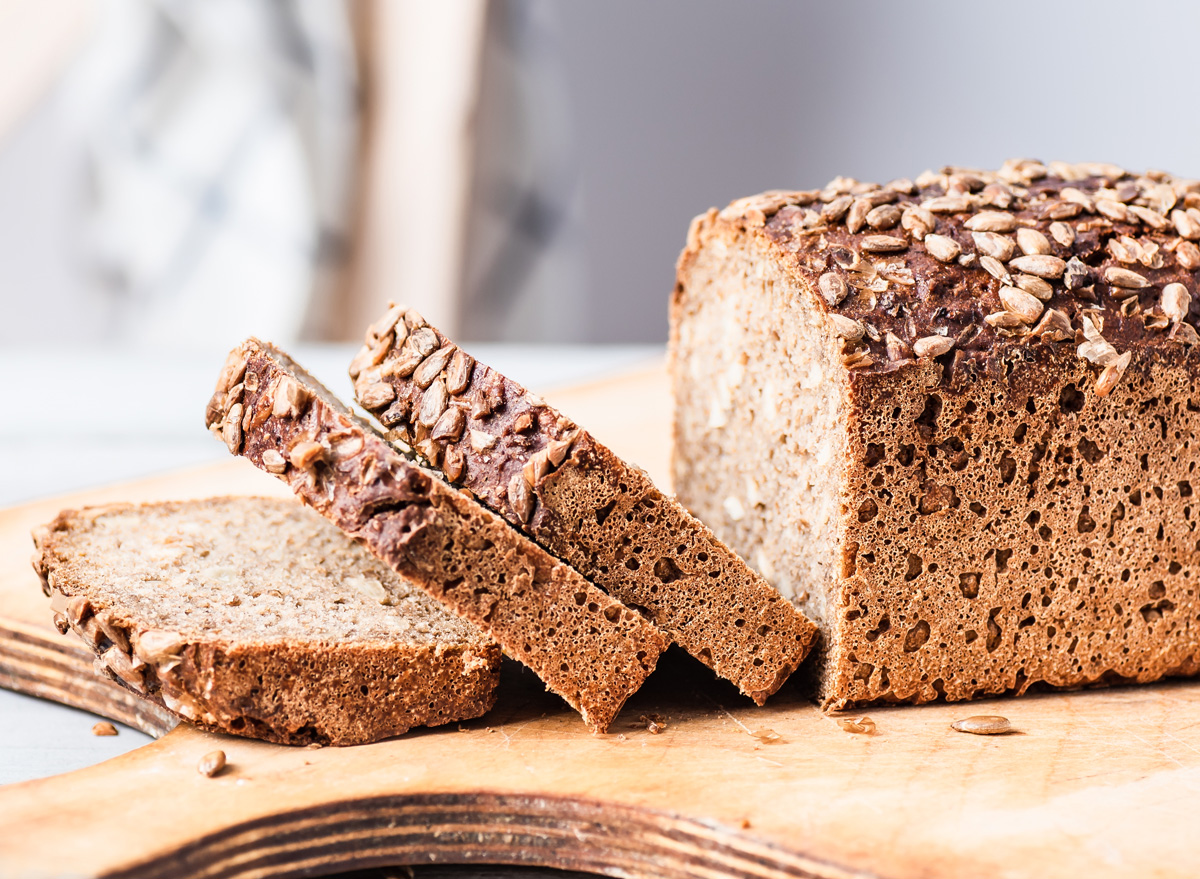
“Sure, the phrase ‘multi-grain’ makes the bread sound super nutritious, but if it doesn’t include a percentage of whole grains, the word ‘whole’ as part of the first ingredient or bear a Whole-Grain Stamp, it’s likely a blend of refined white and wheat flours,” says Stark. Don’t be fooled by the lingo alone.
You only buy potato bread.
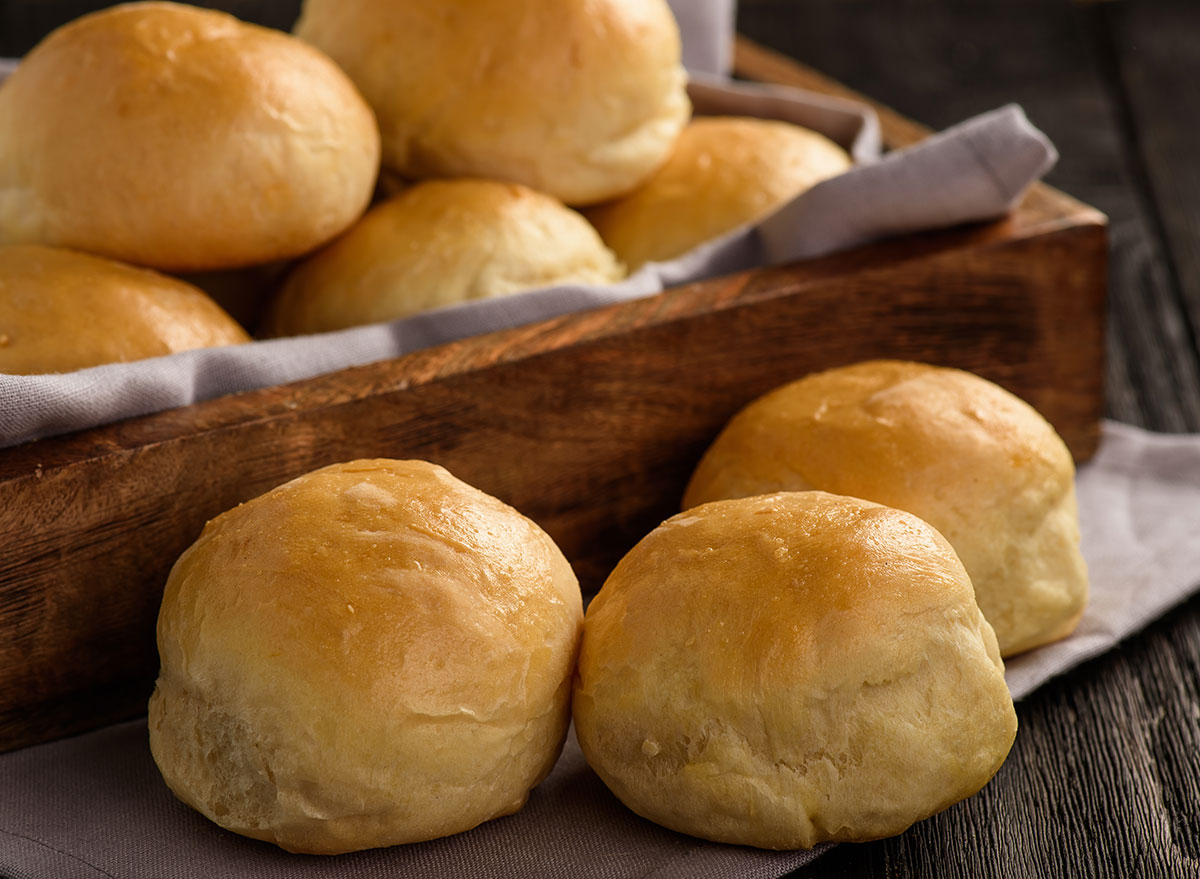
“Devoid of any nutrition from real potatoes, this type of bread is made with enriched flour and often supplies just 1 gram of fiber and 2 grams of protein per slice, plus several grams of added sugar,” Stark says.
If you just can’t resist its pillowy soft texture, opt for a 100% whole wheat variety that delivers slightly more fiber and protein per serving from stone-ground whole-wheat flour.
You buy buttered bread.
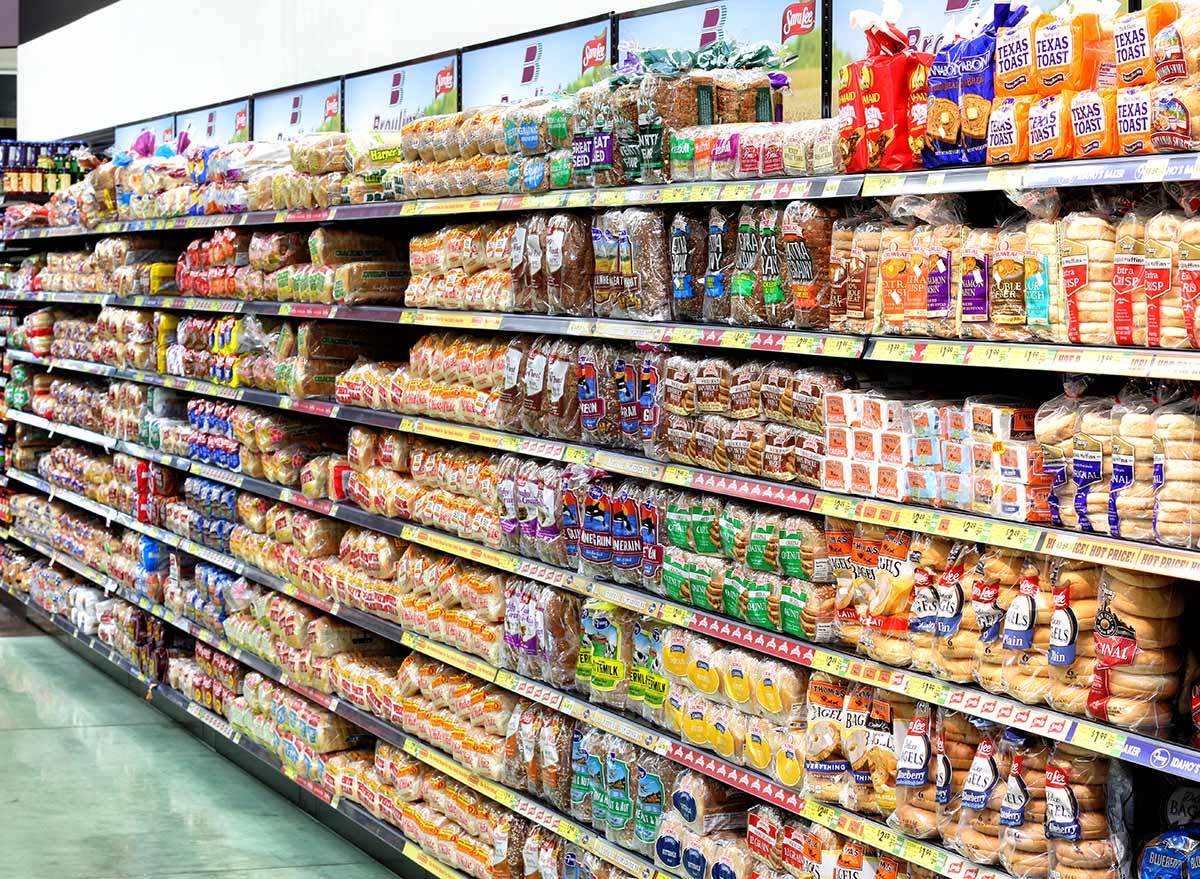
Instead of choosing a bread that has the buttery flavor already baked in, go for a hearty, whole-grain, seeded bread and add the butter yourself.
“While packaged ‘butter bread’ may be made without artificial colors, flavors, or preservatives and contain no high fructose corn syrup (according to one popular brand), you’re better off leaving this one on the shelf,” says Stark.
You think “white wheat” is better than white.
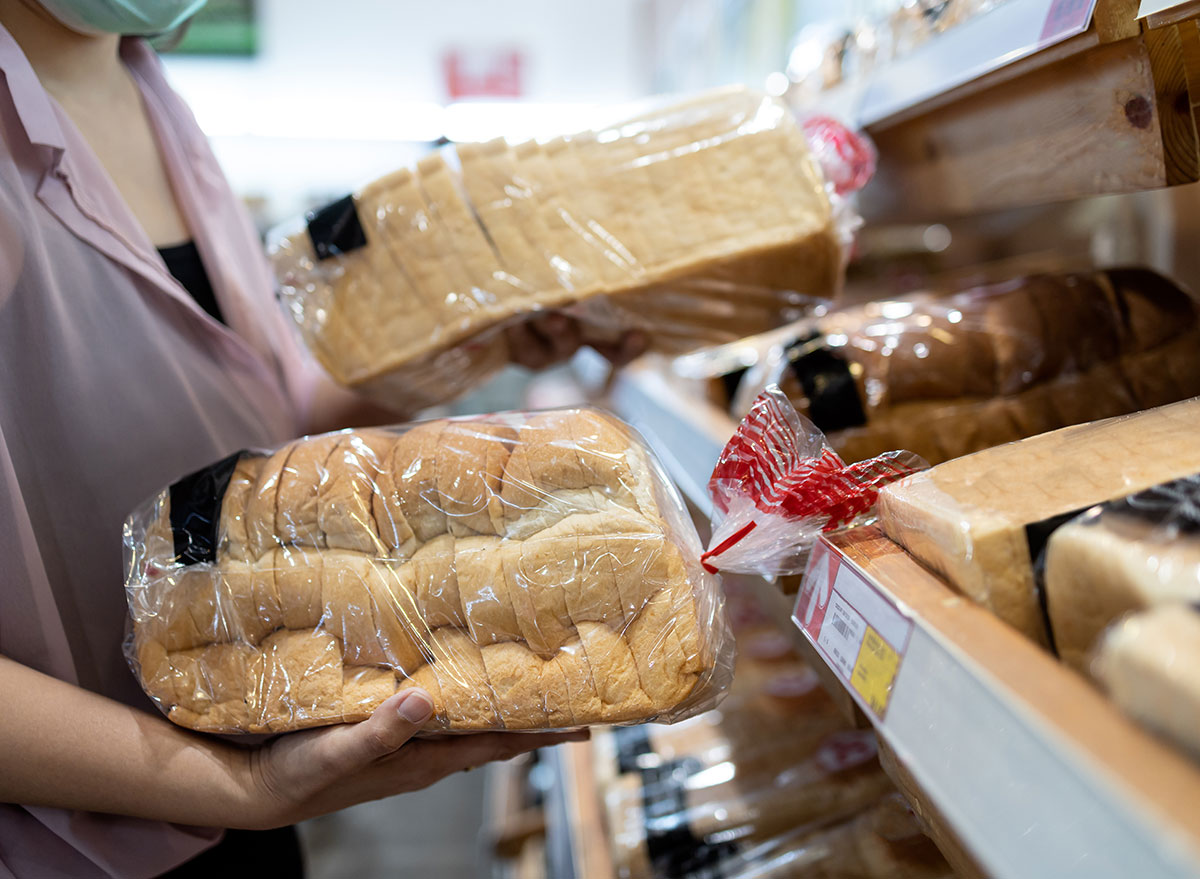
If you see “white wheat” on a loaf of bread, be sure to scan the ingredients listing before adding it to your cart.
“White wheat might sound like a wholesome choice, unless it’s made with white whole wheat flour (from a unique type of wheat) or another source of whole grains, it’s going to fall short of the key nutrients found in traditional whole wheat bread,” says Stark. It’s not any better than classic Wonder Bread. (And just so you know, this is the easy way to make healthier comfort foods.)
You pick a swirled bread.
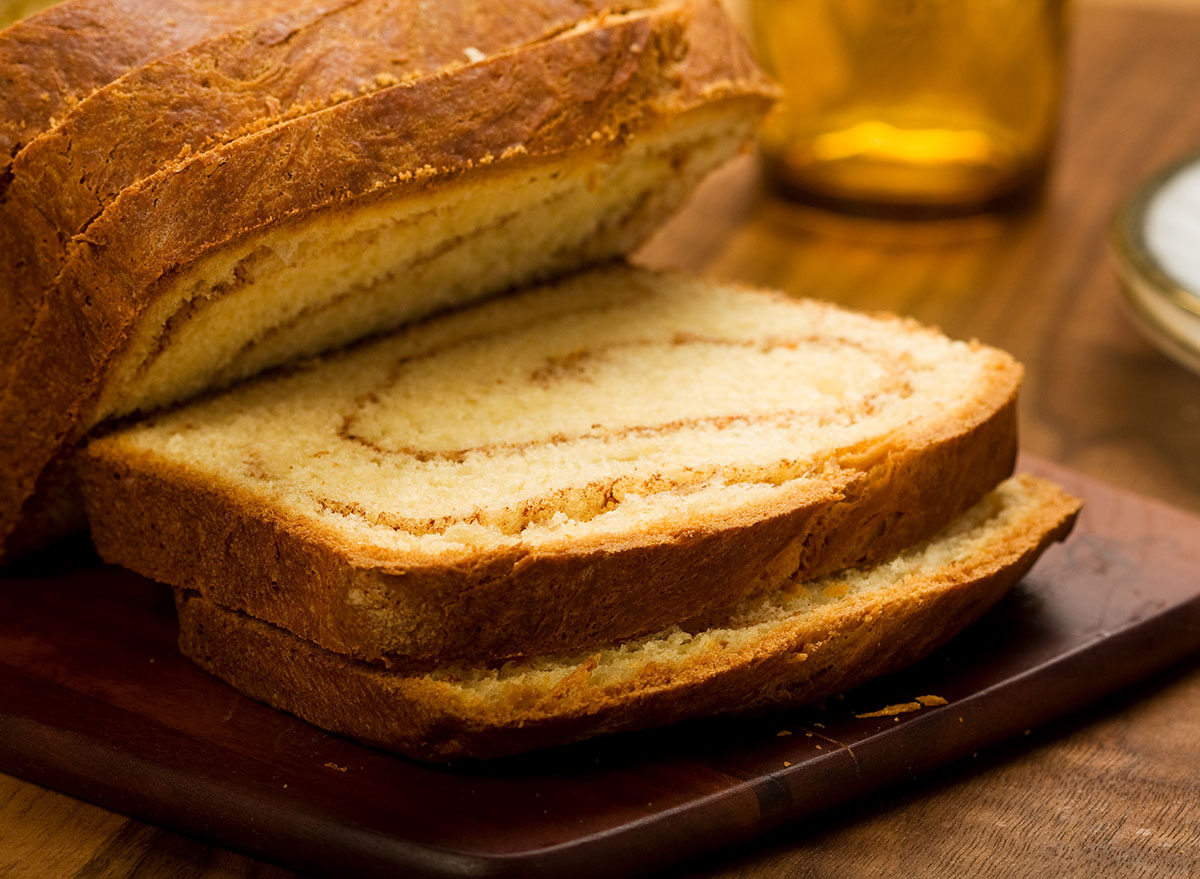
Although it may taste delicious, swirled (or flavored) breads are certainly not the best for you. Think: Pepperidge Farm Raisin Cinnamon Swirl Bread.
“Each slice may have no high fructose corn syrup, but it’s still loaded with added sugars and artificial flavors,” according to dietitian Ilyse Schapiro MS, RD, CDN. For a healthier twist, go with whole wheat bread topped with nut butter and a dash of cinnamon.
You buy honey wheat.
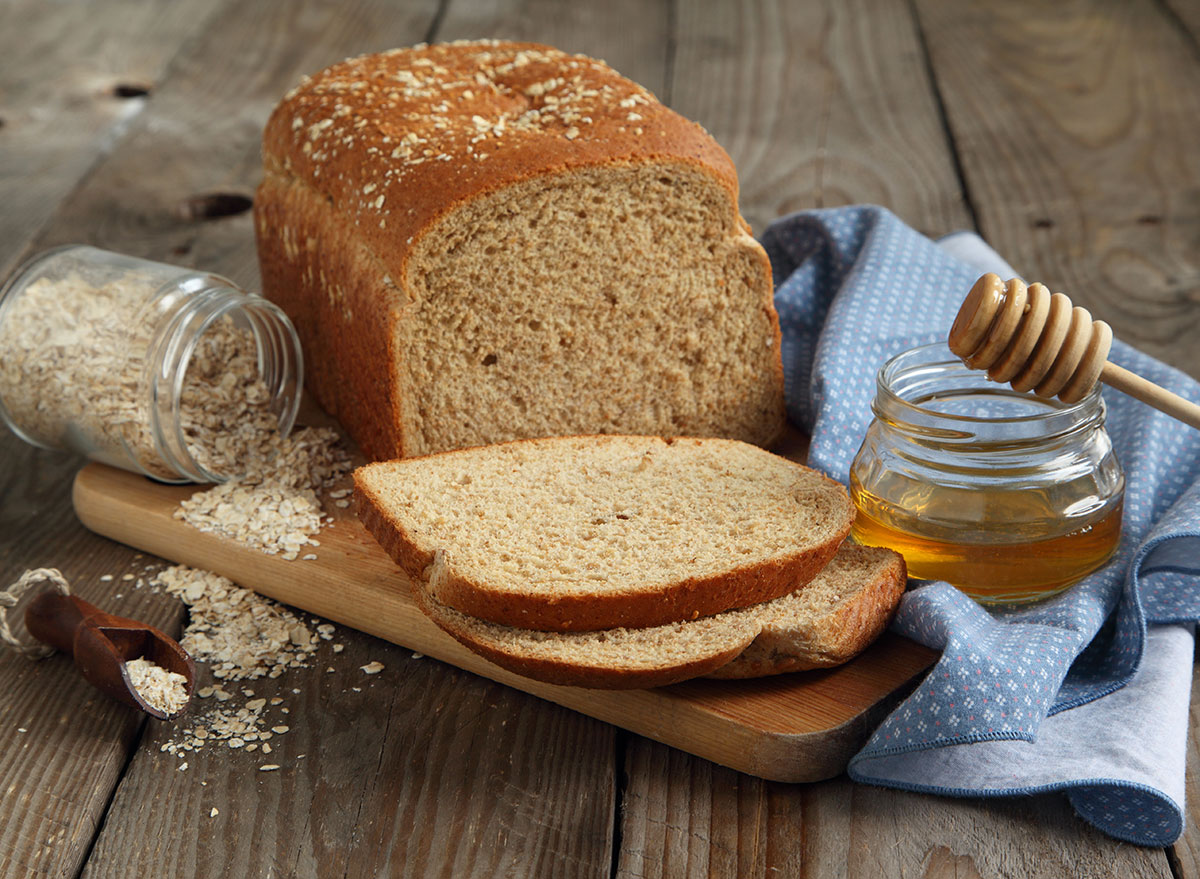
Honey wheat just means the bread is going to be high in sugar.
“Although the first ingredient may be whole wheat flour, the next few are brown sugar, molasses, soybean oil, and butter, which are additives and hydrogenated oils that are artery-clogging and sugar-spiking,” says Schapiro.
Instead, try whole wheat or whole grain bread with nut butter and a drizzle of honey for a more natural and satisfying meal.
You don’t look at the serving size.
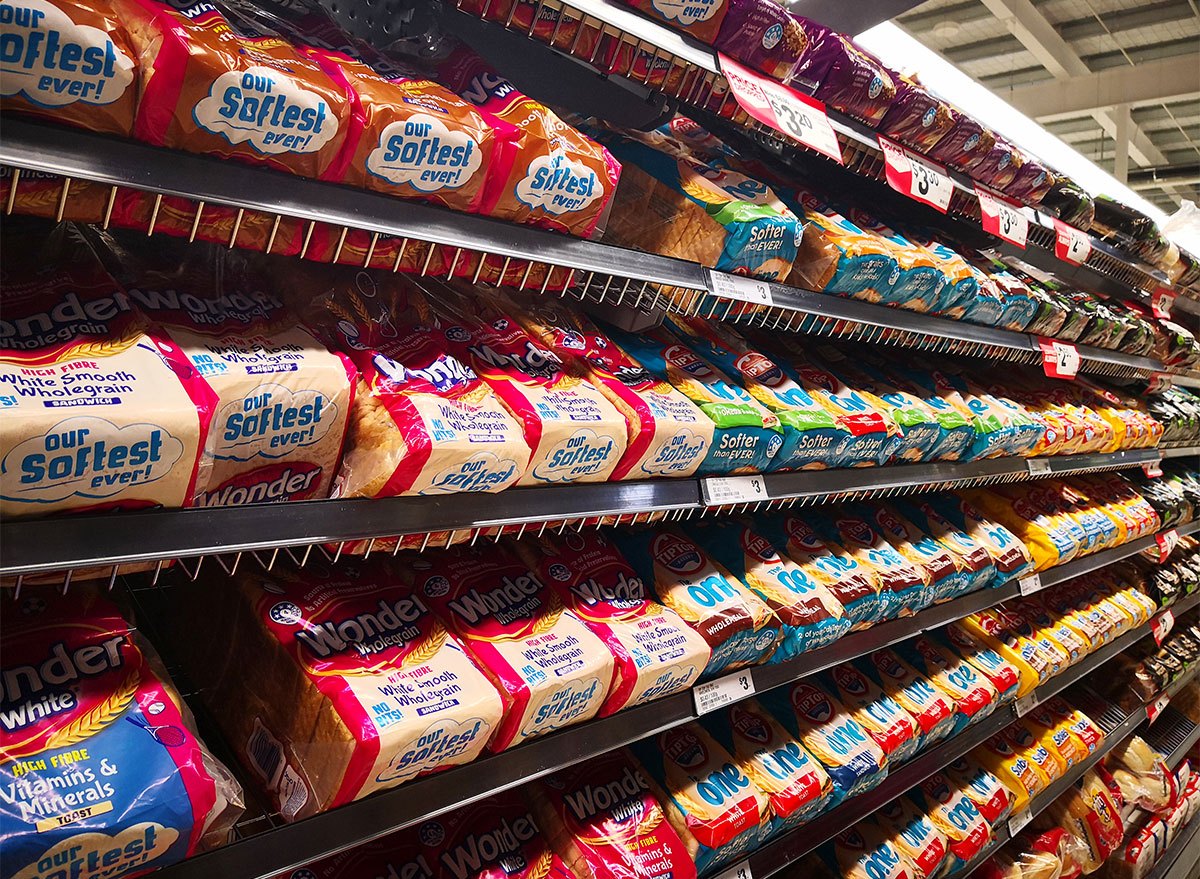
When you’re looking at food labels, do you see one bread loaf that says 200 calories per serving and then another that is 40 calories? Proof right there that not all breads are the same! Make sure you read the labels to see what the serving size is and consider the texture and size of the bread.
For example, that 200 calorie serving bread might be for two hearty slices, while the 40 calorie bread might be for one thin, lackluster slice that won’t fill you up. Make sure you buy the bread for the serving size you intend on eating to avoid being misled.

